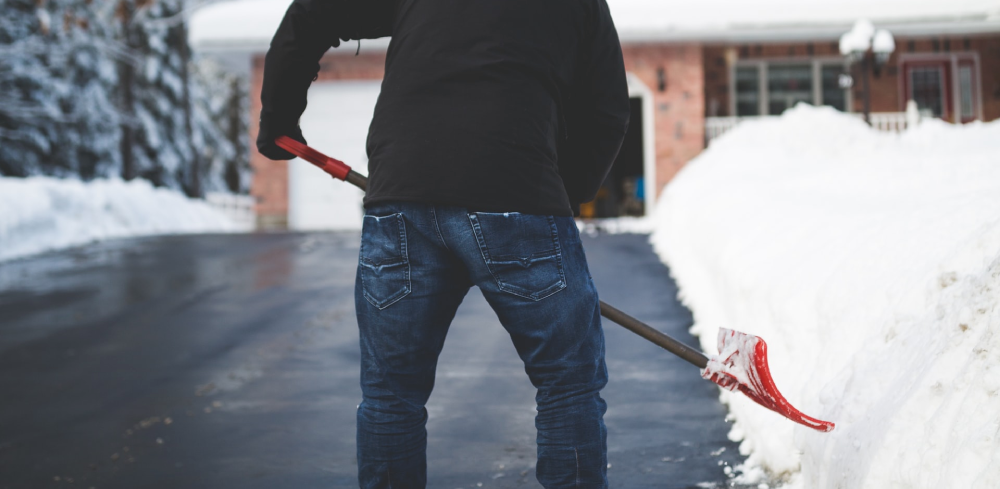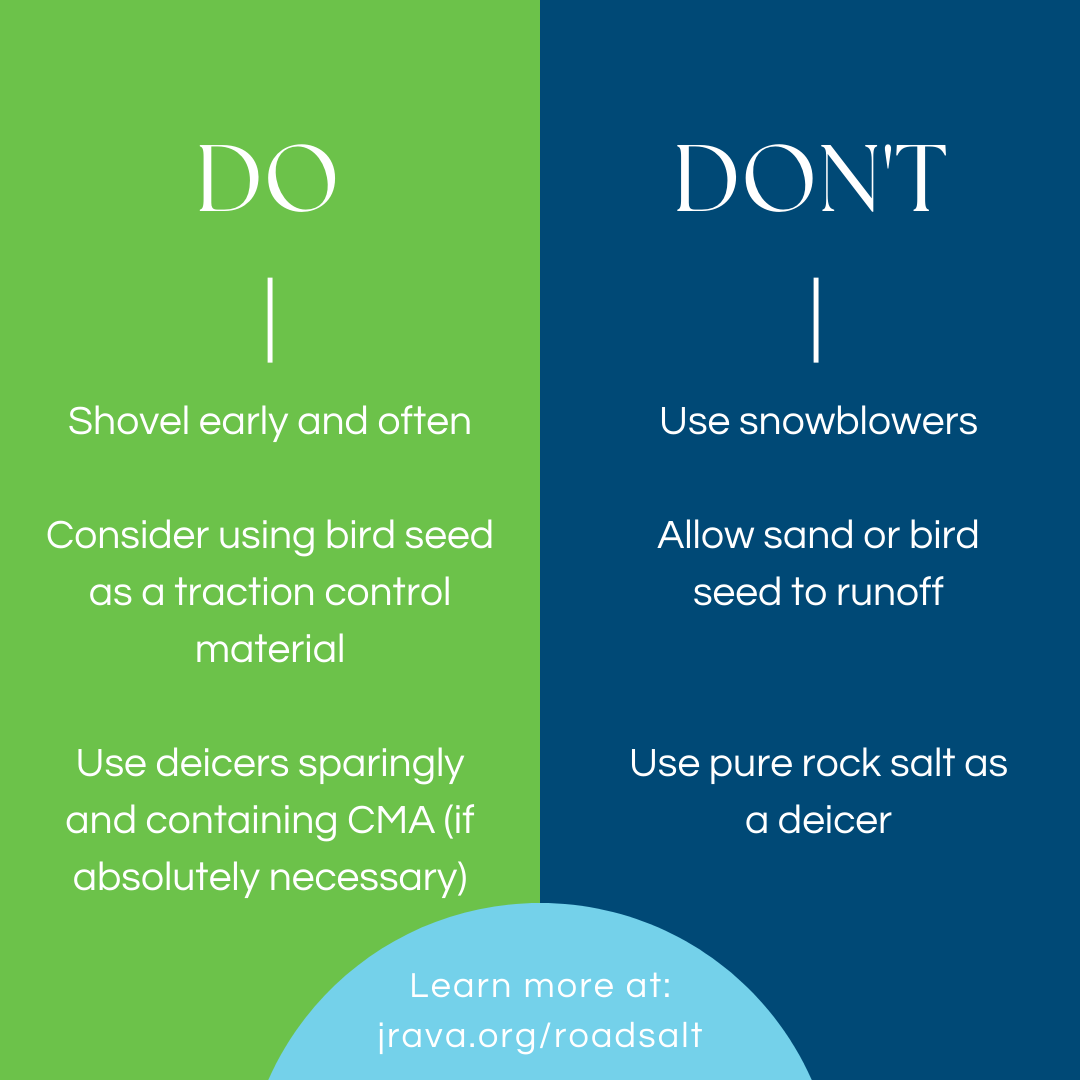By Mason Manley, Community Engagement Coordinator Intern
Road salt is a threat to water quality and harmful to aquatic ecosystems
The winter season brings cold temperatures and wintry precipitation like snow, sleet, and freezing rain that can make all modes of transportation hazardous. Each year, transportation departments across the United States stockpile thousands of tons of road salt for use in deicing treatments on roadways. Add to that all the salt that private citizens use to treat their own properties and that’s a lot of sodium chloride!
Deicing agents, such as sodium chloride, make their way into the James River and its tributaries through stormwater runoff and groundwater infiltration. As a result, the function of local waterways is impeded, local groundwater is salinated, and soil structure can be altered. In the James River, aquatic species including fish and freshwater mussels can have their community make-up altered while nearby flora and fauna can also be negatively affected.
Did you know that one teaspoon of salt is enough to pollute five gallons of water?!
What can you do?
- Use a snow shovel instead of deicing products, such as sodium chloride and calcium chloride, and sand. Shovel snow frequently to avoid the need for deicing products and treat yourself to an ergonomic snow shovel to make the job a little easier.
- Apply bird seed to sidewalks and footpaths instead of deicing products and sand. Sand is frequently used to improve traction and contributes to sediment-related issues in waterways such as water quality degradation and aquatic habitat loss. Be sure to clean up excess sand if it’s used.
- Be wary of “environmentally friendly” claims on deicing products and if you absolutely have to use them, use them sparingly. Products with Calcium Magnesium Acetate (CMA) are a more environmentally friendly option due to their higher effectiveness requiring smaller applications.
- Avoid using snowblowers. They emit harmful fumes and are noisy.
- Join the Izaak Walton League of America as a salt monitor volunteer. Take the Salt Watch Pledge and IWL will send you a free kit with everything you need to find out whether road salt pollution is a problem in your local stream.
Resources:
- Virginia Department of Transportation.
- Athena Tiwari and Joseph W. Rachlin, “A Review of Road Salt Ecological Impacts,” Northeastern Naturalist 25, no. 1 (March 1, 2018): 123–42, https://doi.org/10.1656/045.025.0110
- Ibid.
- Alex K. Pulley and Katie Baird, PE, “INVESTIGATION OF RE-USE OPTIONS FOR USED TRACTION SAND” (Colorado Department of Transportation, June 2010).



